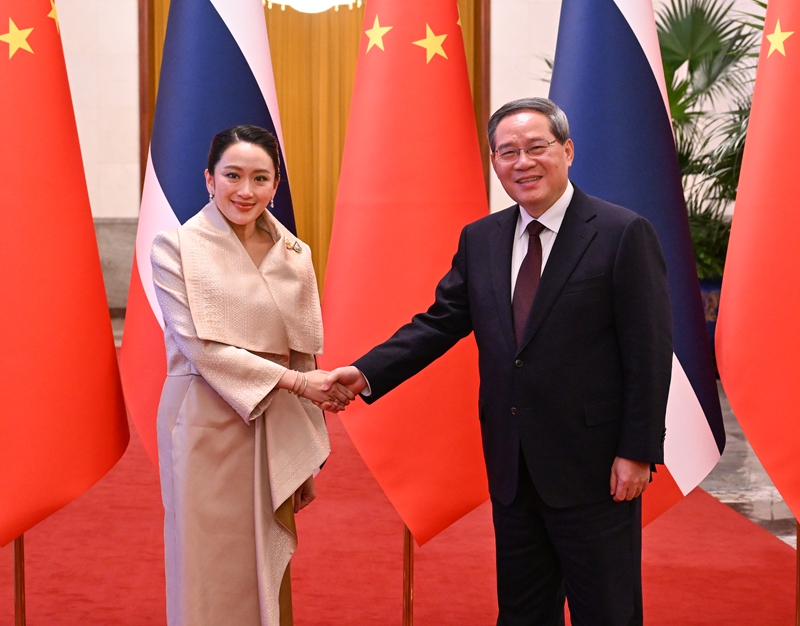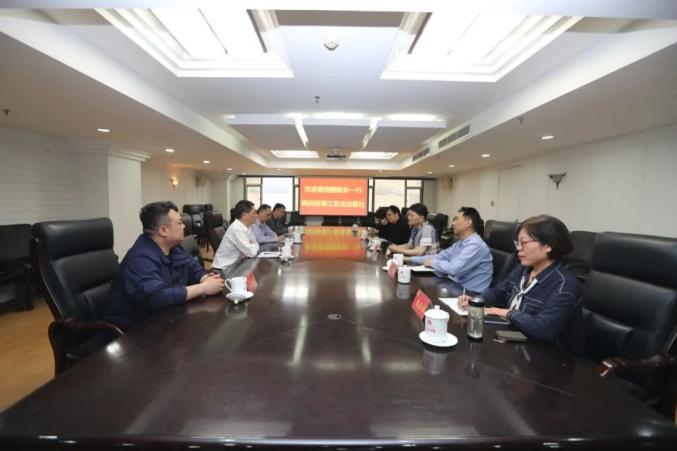The Belt And Road Initiative: Things That Make China Even Better!
The Belt And Road Initiative: Things That Make China Even Better!
Since its proposal in 2013, the "Belt and Road" initiative has been one of China's most ambitious and far-reaching national strategies in recent years. It has made China "more awesome" from multiple dimensions. We can understand it from the following levels: 1
Since its proposal in 2013, the "Belt and Road" initiative has been one of China's most ambitious and far-reaching national strategies in recent years. It has made China "more awesome" from multiple dimensions.

We can understand it from the following levels:
1. "Super Engine" and "Stabler" of Economic Strength
Digested high-quality production capacity and explore new markets: China has accumulated strong excess production capacity (such as steel and cement) in infrastructure, manufacturing and other fields. Through the "Belt and Road", these production capacity is effectively exported to emerging markets and developing countries in need, and the construction of roads, railways, ports and power stations has not only helped others, but also found new exports for its huge industrial system and realized an economic cycle.
Ensure energy and resource security: Many countries along the "Belt and Road" have rich resources (such as oil and gas in Central Asia and minerals in Southeast Asia). Through cooperation in building oil and gas pipelines and transportation networks, China has obtained more stable and diversified energy and resource supply channels, reducing its dependence on a single maritime transportation line, and more guaranteed national security and economic security.
The "fast lane" of RMB internationalization: In large-scale projects of the "Belt and Road", RMB is increasingly used for settlement and financing. This greatly promoted the use of the RMB in international trade and investment, challenged the hegemony of the US dollar, and enhanced China's voice in the global financial system.

2. The "world business card" and "standard setter" of infrastructure capabilities
"Infrastructure Madman" is famous overseas: China's engineering construction capabilities are world-class. The "Belt and Road" is like China's "global construction site", giving China's high-speed rail, bridge, tunnel and port technology an unprecedented place to use. For example, the Jakarta-Bandung High-speed Railway (Indonesia), the China-Laos Railway, the Mombasa-Nairobi Railway (Kenya), the Peresak Bridge (Croatia), etc. have all become landmark projects that symbolize Chinese technology.
From "selling products" to "output standards": In the past, we sold clothes and toys, but now we exported "Chinese standards". Helping other countries build high-speed rail means that subsequent operations, maintenance and equipment updates may adopt Chinese standards. Once the standards are widely accepted, long-term technological dependence and market lock-in can be formed, which is the highest level of competitiveness.

3. The "new chessboard" and "circle of friends" in geopolitics
Create new advantages of "land power": Traditionally, global trade has relied heavily on the ocean, and the United States has obvious advantages in maritime hegemony. The "Belt and Road" has vigorously revived the ancient land Silk Road through the construction of China-Europe freight trains and strengthened the connectivity of the Eurasian continent. This has helped China open up new strategic space, reduce geopolitical risks, and form a new pattern of "land-sea linkage".
Expand the "circle of friends" and enhance international influence: As of 2023, China has signed the "Belt and Road" cooperation documents with more than 150 countries and more than 30 international organizations. This initiative has made China a major partner and development partner of many developing countries, greatly enhancing China's international voice and soft power. China has gradually transformed from a "participant" and "adapter" of international rules to an important "initiator" and "shaper".

4. The "soft power output" of culture and technology
Tell the "Chinese story" well: as projects and personnel go global, China's culture, language, and lifestyle are also spreading. The rise of the "Chinese language fever" around the world is largely due to the demand for trade and cultural exchanges brought by the "Belt and Road".
Digital Silk Road: In addition to traditional infrastructure such as "rail, highway and airplane" (rail, highway, airport), the "Belt and Road" also includes the construction of the "Digital Silk Road". China's 5G technology, e-commerce, and mobile payments (such as Alipay and WeChat Pay) have also taken this opportunity to go global and help other countries to undergo digital transformation, occupying the commanding heights of future technological competition.

To sum up: Where is the "ao"?
The "Belt and Road" has made China more "awesome", and the core lies in its three levels of leap:
1. From "product output" to "capacity output" and "mode output": it is no longer a simple buying and selling of goods, but outputting the entire development capabilities and solutions.
2. From "passive integration" to "actively shaping" the global system: it is no longer just joining the rules set by others such as the WTO, but building a brand new international cooperation platform by yourself.
3. From "regional power" to "global power": its influence far exceeds the surrounding areas, penetrates deep into Africa, Latin America, Central and Eastern Europe, and truly has a global presence and influence.
Of course, this process is accompanied by challenges and controversies such as debt, environmental protection, and cultural conflicts, but there is no doubt that the "Belt and Road" is a key step for contemporary China to move towards the center of the world stage. It has profoundly changed China itself and is also reshaping the world pattern.
This article contains AI-assisted creation





